When you mention salmon in many parts of the world, from the northeastern U.S. and Canada across northern Europe and the remote nether reaches of Russia, everyone assumes you mean Atlantic salmon. Although they are a close relative of coho, Chinook, pink and other Pacific salmons, there are differences. The most significant of them biologically is that, unlike Pacific salmon, Atlantics do not die after spawning. That means the same fish can return for several years in succession to the river of its birth, and each year it will be a few pounds heftier. Another difference, the one that has grabbed the attention of anglers for several centuries, is that Atlantics will often rise to take artificial flies.
In the Great Lakes region, Atlantics were native to Lake Ontario but disappeared during the logging era, victims of log drives and the warming of the rivers after the tree-cover was removed. Attempts to reestablish them have been successful in only a few places, most notably in the St. Mary’s River between lakes Superior and Huron, where a robust fishery is maintained by biologists and students at Lake Superior State University. The Michigan DNR has recently begun a stocking program of their own in northern Lake Huron, so there’s a chance we’ll see mature Atlantics returning to the lower Au Sable and Thunder Bay rivers. Atlantics are also stocked in at least one inland lake that shall remain nameless.
The story below is about my sole journey to fish for wild Atlantics in their native waters. I wrote it on assignment for Outdoor Life, whose editors, after investing a small fortune in the project, decided the subject was too fancy-schmanzy for their readers. It saw print for the first time in my book, The River Home:
NO RAIN HAD FALLEN FOR WEEKS THAT SUMMER in Iceland, and the rivers were so low you could see salmon stacked below every rapids and falls. On the Nordura anglers using very small flies had raised a few fish, but they were skittish and the fishing was tough. Then, the day before I arrived, it rained: a steady, all-day shower that brought the river up a few inches (but did not muddy it; the Nordura never muddies), and suddenly everyone was catching salmon.
I was already stoked with enthusiasm as I bumped in my rental car up the rutted gravel road to the lodge above the Nordura. The outing had all the earmarks of a tease—I had just a day and a half to satisfy the craving of a lifetime. Since high school and maybe a little before, I had dreamed of fishing for Atlantic salmon. I blame Ernest Schweibert, whose evocative recollections of rivers past had stirred a passion for exotic places where big trout and bigger salmon could be enticed into striking artificial flies if they were presented with sufficient skill and a pure heart. Schweibert, the dean of the “Me and André” school of fishing writers, was just as eloquent about good wine, good food, and cultured conversation as he was about trout and salmon. When I read him I was a young fish-head with powerful longings and a lust for adventure but little appreciation for culture. The wine, food, and conversation didn’t take, but the places did— and if you could believe the ravings of writers like Schweibert, one of the best places of all was Iceland.
The Nordura is considered among the top half dozen salmon rivers in the nation , but it is not the best. That didn’t matter to me. In the last few days I had seen enough of Iceland to know that the river and the country it passes through would be spectacular. Much of the big uninhabited interior of the island is a volcanic wasteland strewn with charred rubble that makes it appear as arid and lifeless as the surface of Mars. Some of it softens into bleak rolling fields with the winter-scarred look of Montana in spring , but most of it is covered with such recent volcanic debris that not much lives there. In the interior every horizon is wedged between volcanoes, some of them clearly active. Along the coasts the land is rich with meadows of wildflowers and stands of prolific , stunted birches. Here and there the ground is so thin it shudders beneath your feet and radiates enough heat to melt the soles of your shoes. Springs of hot water support lush, steaming thickets of ferns. Rivers are everywhere— winding through jumbles of rock, slicing in torrents across the lava fields, twisting down tawny meadow valleys where sheep and ponies graze.
The rivers of Iceland are either glacier- or spring-fed. Those that originate as meltwater draining from the island’s five major glaciers tend to be fast and brutally cold and contain so much pulverized rock that they are the color of milk and can’t support fish. The rivers born from springs are also fast and cold, but their water is clear and home to resident brown trout and Arctic char. During the summer they fill with Atlantic salmon.
*
YOU HAVE CHOSEN the best possible time to be here,” the river warden said. His job is monitoring the salmon and making certain everyone who fishes for them has paid for the privilege. I stood behind my car in the parking lot, struggling into neoprene waders and fumbling with the laces of my wading boots. An Englishman loading suitcases and fishing gear into the car next to mine told me he had caught six immature salmon, or grilse, from a single pool that morning. “You will catch salmon this evening,” he said with certainty.
I walked onto the deck of the lodge, a low, cedar-sided ranch located high above the river on top of a treeless bluff. Below were two miles of rapids and pools strung out along the valley. Even from that height I could see salmon jumping in distant pools. The river warden followed me onto the deck and watched the vaulting fish. “Truly,” he said. “The perfect time.”
Inside the lodge I was introduced to two Icelanders who had volunteered to be my unpaid guides on the river. Guides are not required in Iceland, but the nature of salmon fishing makes it a good idea to hire one. Salmon that have returned to the rivers where they were born tend to hold in only a few favored pools. An angler accustomed to fishing for trout can waste a lot of time casting into beautiful and beguiling water that never holds fish.
Magnus Sigurdsson was a forty-eight-year-old bookkeeper for a contractor at the NATO base outside Reykjavik. His brother-in-law, Kristinn Valdimarsson, was the manager and part owner of a printshop in the city. As we were introduced, the river keeper explained that Magnus and Kristinn had already fished the Nordura several times that summer and were now sharing the price of one rod. It meant that they would have to fish alternately, one casting while the other watched. I would share a beat with them.
We followed a steep, winding trail from the lodge down the side of the valley to Eyrin, one of the most productive pools on the river. During the long climb down, Magnus and Kristinn asked if I had ever fished for salmon. When they learned that this would be my first attempt, they were suddenly no longer content to merely lead me to good pools. They wanted to see me catch a salmon , even at the expense of their own success, and insisted I fish Eyrin from the south shore, where a long gravel bar allows an angler to cover all the best water. Upstream was an eight-foot waterfall with a fish ladder notched into the rock beside it. Water poured down the ladder like a plumbing disaster. The pool below the falls was long and deep and, Magnus and Kristinn insisted, full of salmon.
In Iceland the wind can be so continuous that it becomes less a phenomenon of weather than a feature of the landscape. That afternoon the wind was so strong that each time I tried to cast upstream into it the line was thrown back at me. The wind lifted spray from the waterfall and carried it downstream hundreds of feet. Waves on the river had their tops stripped off into horizontal banners. In the middle of that turbulence, at midstream, precisely in the spot I happened to be looking at, a large fish poked its snout out of the water. I muscled a roll-cast across the river and my fly, a small Jock Scott, was snatched by the wind and thrown down hard on the surface, landing by chance just upstream from where the fish had appeared. I yanked the line to take up slack and the fly skittered on the surface like a tiny, brightly dressed clown on water skis. A fish the size of an otter swirled behind it.
I roll-cast again, and again the wind grabbed the line and slapped the fly down at midriver. The line straightened, and the fly skimmed across the surface. It had traveled maybe six feet when a salmon came up and ate it.
I waited for an absurdly long time before raising my rod. I had been coached to do this. Everyone I talked to and every book I read said this was the only way to hook a salmon. If you tried to set the hook quickly, as you would with trout, you would pull the fly from the fish’s mouth. Instead you must wait until the salmon turned and swam toward the bottom and tightened the line itself— only then should you draw up tight on the fish. I did as I was instructed, and when I finally lifted my rod I felt the throb of something heavy and alive. Then it was off.
I didn’t know if I had waited too long or not long enough to set the hook. I had no idea. Across the river Magnus was shrugging at me and holding his palms upward. He called out but I could not hear his words in the wind. I calculated how many hours I had left to fish. Not many. It seemed likely that I had just blown my only chance at a salmon in Iceland.
*
THE ATLANTIC SALMON is supposed to be the anadromous equivalent of the muskie, the fish of a thousand casts. Though I would gladly have made many thousands of casts on the Nordura River, I had two problems. The first was time. My week in Iceland was filled with so many obligations and appointments it had been difficult to break free for even a day and a half of fishing. I was there on assignment, to write an environmental story for a
nature magazine, and had already spent a day bobbing seasick in the Atlantic, been bussed halfway across the island on a tourist junket , and dined with and interviewed government officials, university professors, biologists, and fellow journalists. Only after jumping through a complex arrangement of bureaucratic hoops had I been given permission to fish for salmon.
The second problem was financial. Salmon fishing in Iceland, as in all of Europe, is distressingly expensive. My day and a half on the Nordura cost fifteen hundred dollars for fishing rights, plus three hundred for meals and a night at the lodge. The thousand-dollar-per-day fee for the right to fish goes to the property owners— the farmers who raise sheep in the fertile valley of the river— and it’s firmly set. Not even residents get a discount. Some salmon rivers in Iceland are less expensive, but they are also less productive. A few of the best beats on the best rivers cost considerably more. I was lucky to find an opening on such short notice on the Nordura.
It’s important to understand that this is not my usual gig. In fishing, as in other passions, I’ve never had to pay for it. I didn’t have to pay now, either—at the last minute the tab was picked up by the Iceland Tourist Board—but the principle rankled. I’ve always felt strongly that rivers, lakes, and oceans belong equally to everyone, and everyone should have the right to enjoy them. I don’t mind paying a reasonable fee for a license, knowing that the money goes to enforce game laws and otherwise conserve the resource. But a grand a day? Seven grand a week? Ten grand for a week with lodging? It goes against my egalitarian grain. If the Nordura flowed through northern Michigan and were owned by a consortium of landowners who were growing rich collecting thousands of dollars a day from jet-set anglers, I’d be the poachingest son of a bitch you ever saw. I’d sneak into the river at midnight, wearing camo and blackened face, and catch as many fish as I could. I’d be the Robin Hood of salmon, the most feared catch-and -release criminal in the land.
To a certain extent , of course, you always have to pay to play. Either you pay in effort— as in canoeing and portaging one hundred miles of wilderness river in Quebec to reach a pool filled with five-pound brook trout—or you pay in dollars. The payoff is a richness of experience, a stock of memories, stories to tell your grandchildren.
But when richness of experience is confused with being flat-out rich, somebody loses out. In Iceland the high cost of fishing for salmon excludes many of the natives from the sport. At a fly shop in Reykjavik I spoke at length with a bright-eyed grilse of a clerk who graciously answered my questions about salmon and took the trouble to select a dozen local fly patterns (at five bucks each) that he said were necessary for the Nordura. As it turned out, he could hardly wait to get through those preliminaries so he could pump me for information about salmon and steelhead in British Columbia and Alaska. He could not afford to fish for salmon in his own country and was obsessed with the fact that in the United States and Canada he would be allowed to purchase a nonresident fishing license for less than a hundred dollars and fish anywhere he chose for a year. He could hardly imagine it. Talking about it made him downright goofy with excitement.
Yet, to my surprise, few of the other anglers I spoke with considered salmon fishing an indulgence of the wealthy alone. Icelanders are fiercely proud that in their eleven-hundred-year history as a republic they have always rejected monarchy. That explains in part, perhaps, why fly-fishing for salmon in Iceland is enjoyed by the middle class, while in Scodand, Ireland, and Norway it has traditionally been the sport of kings. Of the dozen guests staying at the Nordura Lodge, the only foreigners other than me were a stiff and unsmiling German financier who was a dead ringer for a Hollywood Gestapo officer, even down to the dueling scar on his cheek, and a Danish businessman and his twelve-year-old son who, when I congratulated him on catching a ten-pound salmon, told me in flawless English and not a hint of snottiness that he had caught a twenty-four-pounder the previous week in Norway. The remaining guests were all residents of Reykjavik who every year squirrel enough money away to take a vacation at one or another of their nation’s sixty salmon rivers. They did not consider the cost unreasonable. They argued, in fact, that it protected the fishery by making it too valuable to abuse.
Economists figure that an Atlantic salmon caught in a commercial net off the coast of Iceland is worth about eight dollars to the nation’s economy, while one caught in a river with a fly rod is worth about eight hundred. In 1991 the government of Iceland placed restrictions on commercial fishing in offshore waters and issued an experimental ban on netting in the estuary where the Nordura and its several sister rivers enter the Atlantic. The following summer, salmon came to the Nordura in twice the numbers of the previous year. Since then their abundance and their average size have increased steadily. For decades nets in the estuary had been set with mesh sizes that captured most of the large salmon and allowed only small adults and grilse to pass through. Such plundering of the genetic stock helped make Iceland’s salmon smaller than those in many countries. On the Nordura before the ban, few fish over ten pounds were caught. Now they are becoming common.
For someone who grew up practicing lowbrow versions of angling, the traditional implements and strict protocols of salmon fishing produce mixed feelings. But after seeing one phantom salmon rise to a fly skating across the surface, the idea of fishing with anything less refined than a fly rod seemed shameful. Netting one from a trawler would be
obscene.
*
SALMON FISHING IN ICELAND is allowed only during two daily sessions, from 7: 00 A.M. to 1: 00 P.M. and from 4: 00 P.M. to 11: 00 P.M. The first evening, after we left the river at curfew, Magnus assured me that I had done all I could to hook the salmon that rose to my Jock Scott. “Sometimes they are simply impossible,” he said. “But tomorrow is a new day. Tomorrow you will have many opportunities to catch a salmon.”
Before dinner there was some confusion when a non-English-speaking member of the wait staff tried to give me a bottle of chilled white wine. As I reached to accept it, thinking it was a gift from the lodgekeeper, the Gestapo officer marched up, clicked his heels together, and took the bottle from the girl’s hand. He said a few words to her in German, and she blushed and became flustered. He then gave me a cold look and went to his table with the wine. He did not offer me a glass.
Dinner was at midnight. We were served smoked pork chops awash in a mysterious but delicious sauce, small Icelandic potatoes, steamed cauliflower, and afterward a flaming dessert the chef delivered amid raucous applause. The dining room’s single long table was filled with ruddy-faced men and women talking in several languages about the day’s fishing. The German stood and announced that he had caught seven salmon from one pool that evening, all on tube flies. Polite congratulations were offered, but I noticed disapproval on several faces. Tube flies are made by tying furs and feathers to the outside of small lengths of plastic or metal tubing, which when pulled through the water leave trails of bubbles salmon are said to find irresistible. Later I would learn that tube flies are frowned upon by traditionalists. They’re considered barely a step above live bait.
Then Magnus stood and told everyone that I had raised a fish on a Jock Scott. The news created a stir. It seems that the Jock Scott has a long and revered history on the Nordura but in recent decades has gone out of style. That I chose to fish with that particular pattern during my first evening on the river, and that it attracted the interest of a salmon, was seen as serendipitous. I was whacked heartily on the back by five or six people. The German whacked harder than anyone.
When I went to bed at 1: 00 A.M., it was so light outside that I stood in the window of my room and watched ponies grazing on the slopes across the valley. I awoke three hours later, the sun already high and bright, and forced myself to stay in bed until six o’clock, when someone in the hallway tinkled a bell. I leaped up and dressed.
After breakfast we left the lodge and drove along a gravel road that placed us beside the river well before the seven o’clock starting time. We had drawn a good beat, one with more productive pools than we could possibly fish in a day. Magnus and Kristinn offered me the choice of fishing with them or spending a couple hours by myself on the same pool where the German had caught his seven salmon the day before. I decided to start the day alone.
They dropped me off beside a section of river that snaked in big gleaming curves across a hayfield, among rolled bales the size of Volkswagen Beetles. Beyond the valley was a row of dark volcanic cones. Except for the volcanoes, the valley and river could have been lifted from central Idaho.
“Walk across the field,” Magnus said, “and fish down quickly past the first bend. The best water is at the base of the second bend. You will see three rocks rising above the water. Fish around the rocks. The salmon will be there.”
I followed his instructions, beginning in the upper water where riffles dumped into deep pools tight against the bank. I saw no fish. Near the bottom of the second bend I came upon not three but five rocks rising above the surface of slow, chest-deep water. Thinking it odd that Magnus had not counted correctly, I fished every inch of the pool, changing flies a half dozen times, carefully covering all the water above, below, and around the rocks. When I caught nothing, I walked to the bottom of the pool, where the slow current spilled over gravel into a chute of fast water. A salmon broke the surface of the chute. I looked closely and there, again, the head of a fish came up. Then I noticed three rocks nearly submerged in the turbulence. I had been fishing around the wrong rocks.
I cast my fly, a size 6 Rusty Rat, across and down, letting the line quarter in the current and sweep into the fast water where the fish had shown. Something strong pulled at the fly. It seemed to pluck at it, as if someone had gripped the fly between a thumb and forefinger and pulled. The sensation was so unusual that I was not sure it was produced by a fish and hesitated to set the hook. I lifted my rod tentatively and it bent. A salmon of about six pounds leaped immediately from the river. It ran the length of the chute into the rapids below and leaped again. I followed downstream along a gravel bar. When I could lead the fish into the shallows, I tailed it and lifted it from the water.
It seemed astonishing that this lovely, wild, powerful fish had taken a fly so eagerly—that it had come to the surface in pursuit of a colorful scrap of feathers that resemble no living thing and was presented in a way that intentionally induced it to drag. Such drag would send a trout diving for cover. Now I understood why monarchs through the centuries have claimed the fish and the sport for their own. There is something undeniably regal about the fish, something profoundly dignified about the sport. I thought of the first time I tasted a really fine wine: Until then I could not imagine what the fuss was about. The fuss that surrounds salmon fishing reaches its most distilled form in the flies. They are constructed according to very old, very complex, and very carefully prescribed arrangements of feathers, fur, tinsel, and silk. Their complexity was probably originally intended to keep the riffraff from producing them. The patterns were given names like Blue Charm, Lady Caroline, Black Fairy, and Silver Doctor, and made as colorful and intricate as hummingbirds. Nobody pretends that salmon will strike only traditional patterns or only those made with the feathers of a dozen exotic birds. In fact, in Iceland one of the most effective patterns, the Collie Dog, is a simple streamer tied with a silver tinsel body and a dark wing made from the hair of a sheepdog—and not just any sheepdog, but a particular dog owned by the Scottish fly tier who produces the pattern. The fly’s future is certain: When the Scotsman’s collie dies, so does the Collie Dog.
During the next hour every tenth cast or so I felt the deliberate, pulling strike of a salmon. All the fish were holding in the fast water around the rocks or just below them. I landed only the first six-pounder and hooked two about the same size and had them nearly to my feet when they pulled free. One or two others felt larger during their first run downstream but got off before I could see them. One strong fish ran down into the rapids and broke my six-pound tippet. I shortened the leader, as Magnus had suggested, until it tested about ten pounds.
There would be other salmon that day. Kristinn caught a nine-pounder first cast in an unnamed pool below a road bridge, then hooked and lost three others all from the same spot. Magnus would cast his big fifteen-foot Spey rod with both hands hour after hour, never raising a fish and never complaining or losing heart. Late in the afternoon, in a narrow, rock-strewn canyon and a pool known as Leggjabrjotur—“ break a leg,” for the boulders that make wading treacherous—we saw a salmon surface in a table-size slick surrounded by fast current on the other side of the river. To reach the fish I had to make a steeple-cast that threw my line high against the canyon wall behind me and sent it fifty feet across the river. In what was certainly more a matter of luck than skill, my fly landed in the center of the
slick. The salmon came up immediately and took it.
I saw no evidence of a catch-and-release ethic in Iceland. The salmon are so abundant that a kind of innocence reigns. I’m told that any angler who catches a salmon implanted with a Floy tag—an electronic device that allows biologists to track migration—and records the tag number and the size and sex of the fish before releasing it is rewarded with a bottle of Bacardi rum, a real windfall in a country where spirits are highly appreciated and extremely expensive. But every Icelander I saw catch a salmon killed it. When I suggested releasing my second fish, Magnus and Kristinn were horrified. It was inconceivable. Salmon were there to be caught and eaten. Throwing them back would be wasteful.
So I killed both of my fish. It was easy to justify. If the Nordura were public water it would be a different matter, but with only a few dozen anglers killing a few fish each per year, there is little strain on the resource. A commercial trawler would take ten times that many in a single day. And it would have been rude for me to release a fish without offering it to my guides. They stood beside me grinning while I bowed to tradition and sliced the small, fatty, adipose fin from the back of my first salmon and swallowed it with a mouthful of river water. I gave the second fish to Magnus.
We had another late dinner and took silent pleasure when the German admitted that his tube flies had failed him that day. Magnus, Kristinn, and I toasted the river and the salmon. Magnus introduced me to his daughter, a radiant twenty-year-old law student who had come for the evening to visit her father. I told him she was beautiful, and his eyes filled instantly with tears.
I drove in twilight the two hours south to Reykjavik, slowing for sheep that had wandered onto the highway. As I crossed rivers rushing from the interior toward the coast, I thought of the Icelanders who fish for salmon in those waters—the shop-keepers, accountants, and high-school teachers who save their money all year for a week or two of fantastic fishing. They would deny that casting elaborate flies for salmon is a sport reserved for the privileged classes, would perhaps argue that in Iceland everyone is a person of privilege.
And what if those lively rivers were mine? What if I owned the land, the water, the salmon that swam up from the ocean to spawn? Would I gate the roads and post the boundaries and allow only my closest friends inside?
I stopped on a bridge over a river so lovely that I felt something in my chest rip. Rapids tumbled toward the bridge, throwing whitewater hard against black volcanic rocks. Upstream, in pools so deep and clear that in sunlight the water would become as blue as glacial ice, salmon swam restlessly. For enigmatic reasons those fish would occasionally rise to the surface to take flies thrown by hopeful oafs who had traveled thousands of miles to sample the mystery and sustain the tradition. Sometimes tradition is just folly perpetuated. But not here, not now. And if it was, it didn’t matter. I wanted more. I wanted much more.
Heaven help us if I ever strike it rich.
(From The River Home:An Angler’s Explorations, by Jerry Dennis. Available at bookstores everywhere, or from the author himself.)

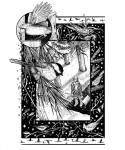 In the mornings, while I’m filling the bird feeders, a few black-capped chickadees converge even before I’ve finished and land inches from my hands. Other species hide in the evergreens until I’ve gone inside. Only then can I stand in the window and watch finches, juncos, and redpolls that are otherwise only distant, flitting glimpses in the trees. When they come to the feeders they prove to be not indistinct small gray shapes, but vivid individuals brushed with color and detail. A bird is the very embodiment of wildness, and when it accepts our offerings of sunflower and suet, the space between us fills somehow.
In the mornings, while I’m filling the bird feeders, a few black-capped chickadees converge even before I’ve finished and land inches from my hands. Other species hide in the evergreens until I’ve gone inside. Only then can I stand in the window and watch finches, juncos, and redpolls that are otherwise only distant, flitting glimpses in the trees. When they come to the feeders they prove to be not indistinct small gray shapes, but vivid individuals brushed with color and detail. A bird is the very embodiment of wildness, and when it accepts our offerings of sunflower and suet, the space between us fills somehow.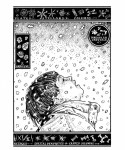

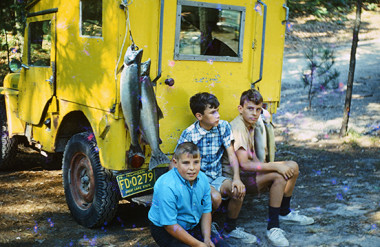
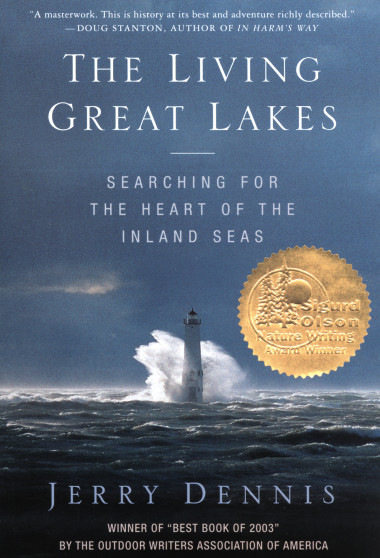
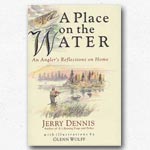


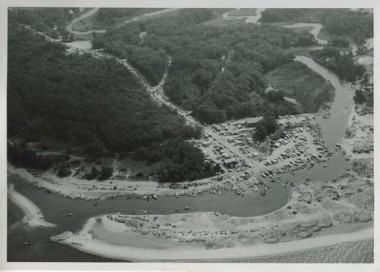

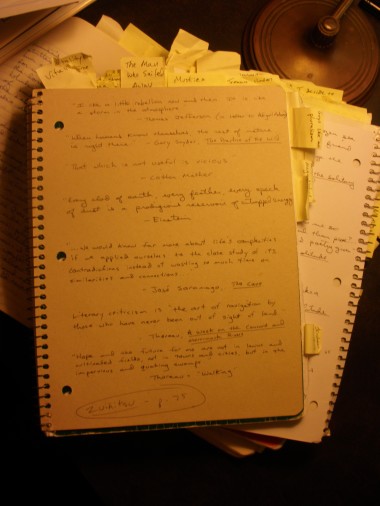

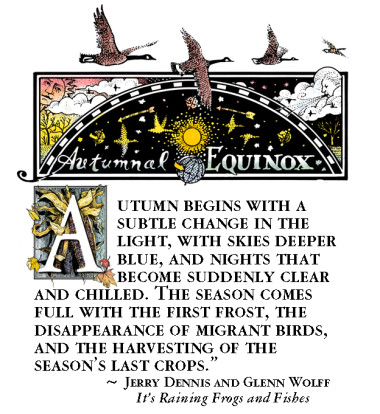
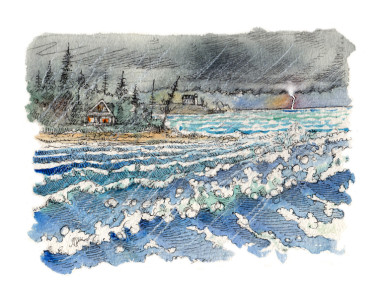
2 Replies